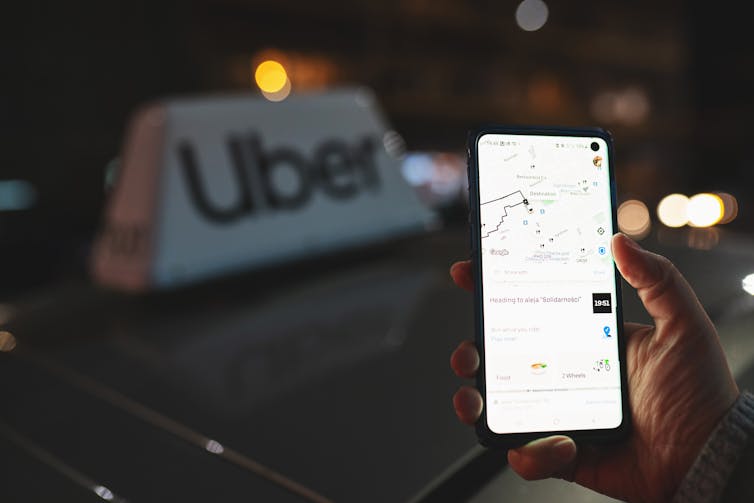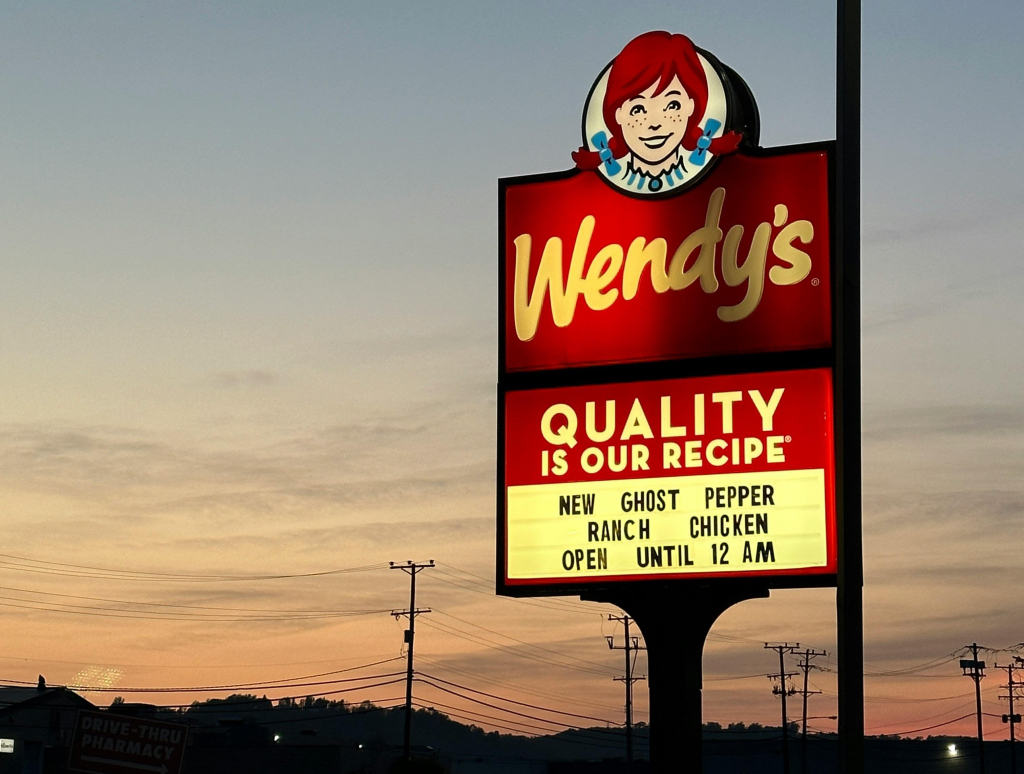The recent controversy over Wendy’s pricing strategies is a perfect example of how online word-of-mouth can distort marketing communications and create confusion for consumers.
Wendy’s new president and CEO Kirk Tanner announced plans to test dynamic pricing and AI-enabled features by 2025 on Feb. 15 during an earnings call. He said: “Beginning as early as 2025, we will begin testing more enhanced features like dynamic pricing and day-part offerings.”
Many interpreted this to mean Wendy’s would be introducing surge pricing — a term often associated with the dynamic pricing models used by companies like Uber, where prices increase during periods of high demand.
The issue likely stemmed from confusion over terminology. Although surge pricing and dynamic pricing are often used interchangeably, they have slightly different definitions. Dynamic pricing refers to any pricing model that allows prices to fluctuate, while surge pricing refers to prices that are adjusted upward.
Several news outlets ran stories suggesting Wendy’s would raise prices during busy periods, prompting widespread backlash and criticism online.
Wendy’s executives have since clarified that its dynamic pricing model would not increase prices for customers, saying in a news release the CEOs comments were “misconstrued.” Wendy’s said that while price adjustments could happen in both directions, the upper limit would remain the current price.
Although Wendy’s won’t be exploring dynamic pricing until 2025 at the earliest, this type of pricing strategy is nothing new for many industries.
Dynamic pricing is nothing new
One aspect of the Wendy’s dynamic pricing controversy that warrants further examination is the nature of the product being sold. Traditionally, dynamic pricing has been associated with high-value goods and services, such as airline and concert tickets and ridesharing services, where consumers are accustomed to fluctuating prices.
In contrast, fast food is generally perceived as a low-cost, everyday convenience with an expectation of stable pricing. Introducing dynamic pricing into the fast food industry represents a significant departure from these established norms.
Of the industries that already use dynamic pricing, ride-sharing apps are perhaps one of the most well-known. Uber, for example, uses surge pricing during peak times, meaning prices increase during periods of high demand when there aren’t enough drivers available for every customers.
The travel and hospitality industries have long used dynamic pricing models as well. Airlines adjust ticket prices based on a variety of factors, including time until departure, the day of the week and demand for specific routes. The hospitality industry similarly adjusts room rates based on demand, seasonality and local events.

Airlines adjust ticket prices based on a variety of factors, including time until departure, the day of the week and demand for specific routes. (Shutterstock)
Ticket prices for concerts, sporting events and other live performances often vary based on factors like demand, seat location and timing as well. In this context, dynamic pricing allows event organizers to match prices to perceived market value.
Benefits of dynamic pricing
When implemented effectively, dynamic pricing can offer a number of benefits to both businesses and consumers. One advantage it offers is an enhanced customer experience. Dynamic pricing can provide value to consumers by offering lower prices during off-peak times or for less popular products and services.
This can make certain goods and services more accessible to budget-conscious customers and encourage them to make purchases they might otherwise forgo. Additionally, dynamic pricing can help businesses respond to market changes and customer preferences more quickly, leading to a more personalized and satisfying shopping experience.
Dynamic pricing can also help with inventory management. For industries dealing with perishable goods or limited inventory, dynamic pricing can help manage supply and demand more efficiently.
By adjusting prices based on demand, businesses can encourage sales when inventory is high or demand is low, reducing the risk of unsold inventory. This can be particularly beneficial for events or services with fixed capacities, like concerts or flights, where unsold seats represent lost revenue.
Lastly, dynamic pricing can help businesses maximize revenue and profitability. It allows businesses to adjust prices in real-time based on demand, competition and other market factors.
Challenges of dynamic pricing
While dynamic pricing offers a number of benefits, it also comes with its own set of challenges. One of the biggest risks associated with dynamic pricing is the potential negative impact on customer perception and trust. If customers feel that prices are unfair or unpredictable, they may lose trust in the brand.
This was evident in the Wendy’s situation, where the misunderstanding around surge pricing led to a backlash. Transparency and clear communication are crucial to maintaining customer trust when implementing dynamic pricing strategies.

While Uber is one of the most well-known examples of using surge pricing during peak times, the travel and hospitality industries have long used dynamic pricing models. (Shutterstock)
Another concern is the way dynamic pricing can be perceived as a form of price discrimination, where different customers are charged different prices for the same product or service based on factors like demand, time of purchase or even personal data. Businesses need to ensure their dynamic pricing models are fair and do not inadvertently discriminate against any customers.
Implementing a dynamic pricing strategy can be complex and requires sophisticated technology and data analysis capabilities. Businesses need to invest in the right tools and systems to effectively manage and analyze large volumes of data in real-time.
Additionally, businesses need to ensure their pricing algorithms are accurate and responsive to market conditions. Failure to do so can result in pricing errors, lost revenue and damage to the brand’s reputation.
Lessons for businesses
As technology continues to advance, dynamic pricing models are expected to become more common across sectors like retail, energy and transportation. While these pricing models offer the potential for increased profitability, businesses need to approach them with an honest and genuine consumer-first approach.
The recent pricing controversy at Wendy’s underscores the importance of precise language and transparent communication for companies looking to adopt dynamic pricing. It serves as a reminder that businesses need to avoid misunderstandings and negative reactions from customers.
As dynamic pricing gains popularity, companies must carefully choose their words and clearly articulate their pricing strategies to prevent misunderstandings and maintain customer trust. Failure to do so could result in losing control over how consumers and the public interpret their pricing strategies, which could significantly impact their reputation and overall success.



 The Mars Sample Return mission has a shaky future, and NASA is calling on private companies for backup
The Mars Sample Return mission has a shaky future, and NASA is calling on private companies for backup  Toyota Teams with Tencent, Nissan Joins Forces with Baidu in China AI Drive
Toyota Teams with Tencent, Nissan Joins Forces with Baidu in China AI Drive  South Africa’s youth are a generation lost under democracy – study
South Africa’s youth are a generation lost under democracy – study  Inditex Re-enters Venezuelan Market with Zara Store Opening
Inditex Re-enters Venezuelan Market with Zara Store Opening  McDonald's Korea Announces Price Hike Amid Record Revenue
McDonald's Korea Announces Price Hike Amid Record Revenue  History for sale: what does South Africa’s struggle heritage mean after 30 years of democracy?
History for sale: what does South Africa’s struggle heritage mean after 30 years of democracy?  Walmart’s Director and Heir Rob Walton to Step Down From Board
Walmart’s Director and Heir Rob Walton to Step Down From Board  Aramco Becomes FIFA’s 6th Global Partner Joining Adidas, Coca-Cola, Qatar Airways, Hyundai, and Visa
Aramco Becomes FIFA’s 6th Global Partner Joining Adidas, Coca-Cola, Qatar Airways, Hyundai, and Visa  ‘They don’t have enough’ – schools in England are running food banks for families
‘They don’t have enough’ – schools in England are running food banks for families  PepsiCo Recalls Another Popular Soda Brand
PepsiCo Recalls Another Popular Soda Brand  DJI Faces Possible US Ban by Congress, Echoing Concerns Over TikTok and China
DJI Faces Possible US Ban by Congress, Echoing Concerns Over TikTok and China  Mainland China Investors Blocked from Accessing New Hong Kong Bitcoin ETFs
Mainland China Investors Blocked from Accessing New Hong Kong Bitcoin ETFs  Hertz to Offload 30K EVs This Year, Deepens Cuts Amid Mounting Fleet Losses
Hertz to Offload 30K EVs This Year, Deepens Cuts Amid Mounting Fleet Losses 































